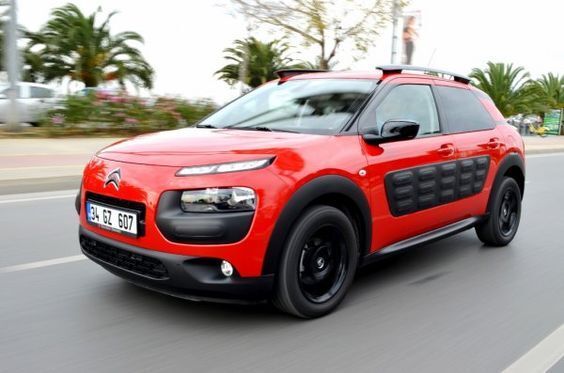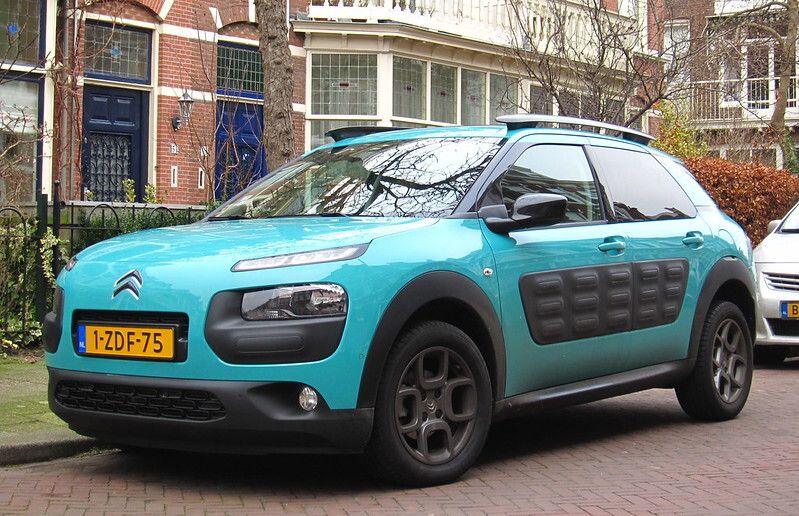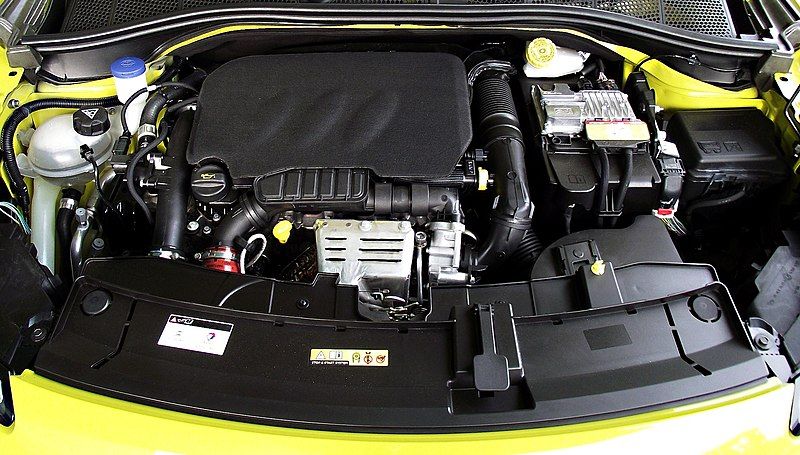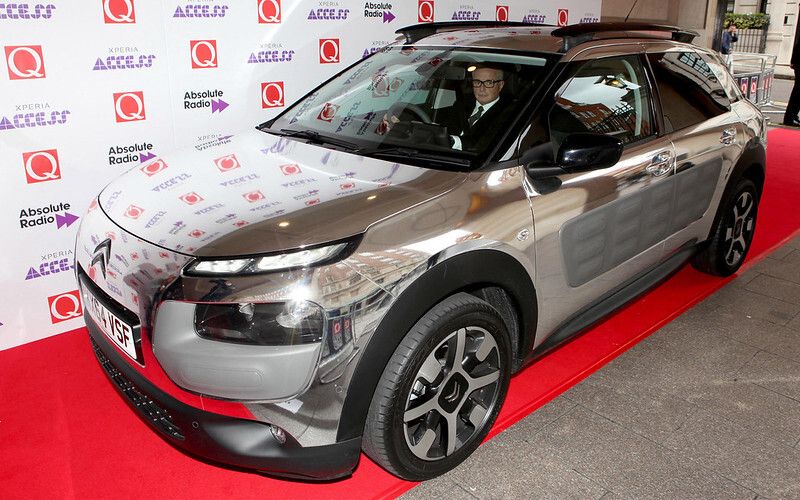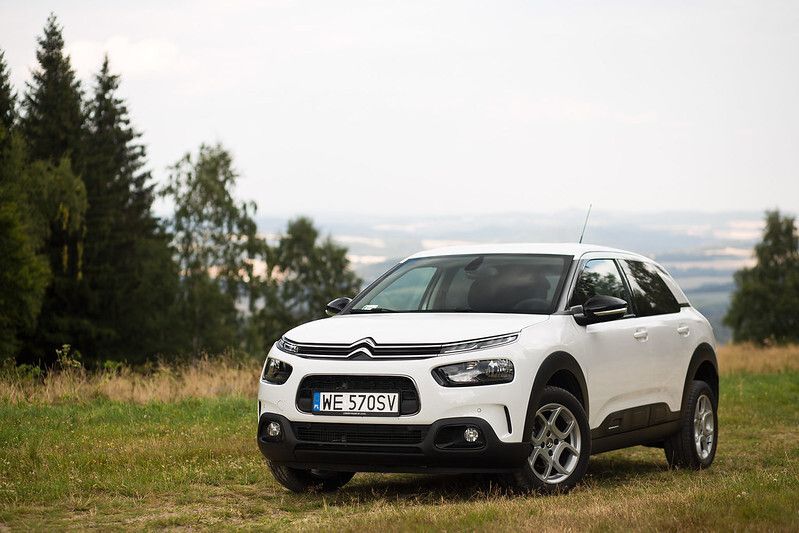As demonstrated in the most recent installment of The Grand Tour: Carnage A Trois, the French have a longstanding history of challenging every single car norm the industry has to offer. Their unwillingness to bend to society’s standards and customs has gifted us such legendary cars as the Alpine A110, Peugeot 205, or Renault’s Clio V6. The French have proven time and time again that economy cars can be stylish, tasteful, and even downright weird.
We at HotCars love them for it, as it forced the rest of the automotive industry to take note, and push the boundaries of what cars in general could be. As we progress into more bland styling than ever before, with most cars resembling amorphous blobs of plastic and metal, Paris’ own Citroën continues to push back. With its broad range of cars in its lineup, none are more interesting than the C4 Cactus.
Produced since 2014, the C4 Cactus is defined as subcompact crossover-SUV, but sets itself apart from its boring classmates in a multitude of ways. From original design and styling, to surprisingly peppy performance, the Citroën C4 Cactus is a diverse city-car with big capabilities. Here’s everything you need to know about this posh Parisian.
The C4 Cactus' Driving Experience
On paper, the Citroën C4 Cactus appears to capable of nothing more than just being a people mover. At its best, it produced only 130-hp through its puny 1.2-liter petrol engine and 98-hp with its 1.6-liter diesel engine. Its automatic transmission was adequate, although seriously lacking when needing a boost of speed for a lane change on the highway. The combination of the two, takes the Cactus from 0-60 mph... eventually, after about ten seconds.
However, when the 1.2-liter turbo PureTech 130 is paired to Citroën’s six-speed manual transmission, the Cactus shows some damn spirit. Weighing in at only 2,360 pounds, the Cactus can make 177 lb-ft of torque, and sees its 0-60 mph time drop a solid couple of seconds.
Although the steering feel is nothing to write home about, its lightweight design allows the C4 Cactus to effortlessly throw its shoulder into the corners at unreasonably high speeds. Downshift out of the corner and the Cactus can take off like a tiny bat out of hell. Making the C4 Cactus the epitome of the ultimate slow car fast experience. You may put a big dent in the combined 58 mpg, but the smile it will put on your face is money well spent.
Unique Design Cues
Like the rest of its French car-manufacturing peers, Citroën has a long history of creating unnecessarily weird cars, that tend to blur the lines between art and functionality. The C4 Cactus is no different. Challenging industry norms and pushing the boundaries of car design, the Cactus sees the addition of its infamous “airbumps.” Essentially, a layer of plastic armor that provides protection for daily-driving duties and minor collisions. The Citroën made its debut in 2014 in a cluttered SUV segment, and immediately found itself a winner. The Cactus’ quirky exterior, and roomy interior gave the plucky little SUV personality and character that the SUV demographic sorely needed.
For such an affordable car, the Citroën is generously equipped with niceties such as a 7” touchscreen, digital audio broadcasting radio, Bluetooth, split-folding rear seats, and 16” alloy wheels. With more than enough room for adult passengers to fit comfortably in the backseat, the Cactus is a very well-rounded econobox.
Engine Options
As mentioned earlier, its rather dainty engines weren’t capable of producing much power or torque. But for the feather-light Cactus, the turbocharged petrol and diesel options were enough to give the quirky Citroën a peppy attitude when dolling about town. Although the Cactus used two engine power plants, the 1.2-liter inline-3 PureTech petrol engine and the 1.6L inline-four BlueHDI diesel engine, it saw many updates and alterations over its eight-year lifespan. It’s 1.2-liter could produce anywhere from 80 hp-130-hp, and the 1.6-liter varied from 82hp- 98-hp, all based on trim and option packages.
Awards And Accolades
Since it debuted to critical acclaim at the 2014 Geneva Motor Show, the spunky Cactus has been met with numerous awards and accolades. Most notably:
- Hatchback of the year (2014) – Top Gear Magazine
- World Car Design of the Year (2015) – New York International Auto Show
- Production Car of the Year (2015) – Geneva Motor Show
- Small SUV of the Year (2017) – Auto Express
Through its unique and original designing, inside and out, Citroën continuously pushed the envelope of what an everyday, practical car can be. The press releases for the Cactus began to slow down after its 2018 facelift, seen almost as a regression for the mighty C4 in terms of the car’s character, it was a major step forward in relation to the car’s technological prowess.
Pricing Of The Citroen C4 Cactus
Granted we’re discussing a car that is now only produced in Brazil and Argentina, the pricing of the C4 Cactus has always been its most attractive feature, regardless of geographical location. When new, the Cactus saw its price vary over the years, but generally was based around $17,000-$19,000, and topped at around $23,000-$26,000. Its accessible price point, generous features, and interesting quirks helped Citroën sell nearly 400,000 units over the six years it was featured in Europe.
With an abundance of supply, the Cactus is a great option for those in the market for a practical and capable, small SUV. Even in the hectic car market, the Cactus sees prices as low as $4,500 in some parts of the world, with some very nicely equipped models hovering around $7,000-$8,000. The C4 Cactus is yet another example of an awkwardly shaped Citroën, with a multitude of applications in the real-world. From off-road builds to slammed mini-wagon lookalikes, there’s a Cactus build for every type of gear head.


